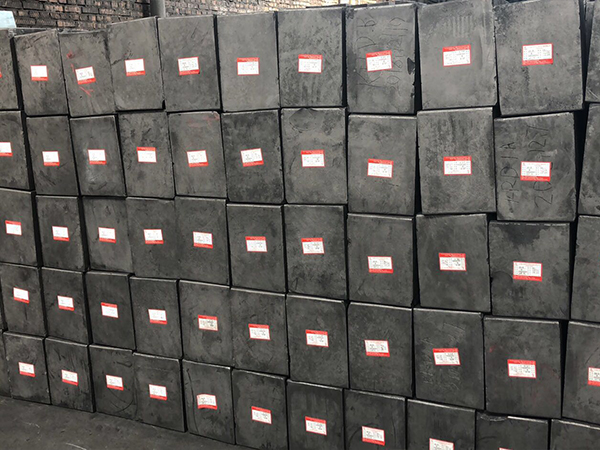Importance of upgrading integrated vehicle network is imperative
CAN provides multiple master layers to support the development of intelligent redundant systems. In this type of network, if a network node is defective, the network can still function. The message is broadcast over the network, and then all nodes receive the message and can read the message to determine if this message is relevant to them and if any action is to be taken. In this environment, data integrity must be ensured because all nodes of the system use the same information. Data integrity is also supported through error detection mechanisms and retransmission mechanisms for defective messages. The LIN protocol is an overall communication concept for smaller automotive networks. Its specifications cover the definition of protocols and physical layers, and the definition of interfaces for development tools and application software. In applications such as vehicle switches, smart sensors, and transmissions, LIN eliminates the need for bandwidth and versatility of the CAN. LIN can provide cost-effective communication networks. This communication network protocol is based on the SCI (UART) data format, using a master/multiplexer concept. Each node uses a single-wire 12V bus and clock synchronization and does not require a stable time base. Since LIN is intended for low-end applications, two factors are critical: Compared to CAN, the communication cost per node must be further reduced significantly; the performance, bandwidth, and versatility of CAN are not required. The main cost savings of LIN compared to CAN stem from: single-wire transmission; because of hardware or software in the chip, the implementation cost is low; there is no need to use crystal or ceramic resonators in the slave node. With the increasing number of ECMs in automobiles, the challenge that automotive electronic system architects will continue to face is to create a "most cost-effective network" for a " networked " automotive environment so as to advance the performance of automobiles. . The importance of the automotive network system upgrade, the integrated vehicle network is imperative After years of development and improvement, automotive network technology has now become the basic technology of major automotive manufacturers. The enterprise network protocol standards define the enterprise-level physical layer, data link layer, transmission protocol, application layer, and fault diagnosis specifications. Moreover, in order to ensure the high quality and short development cycle of the software that complies with this agreement, vehicle manufacturers generally also specify that when developing automotive electronic products, they must use the protocol stack software and related development tools provided by professional software suppliers. And the development and testing processes that must be followed. Having network protocols, protocol stacks, test standards, and related processes can enable companies to become more efficient, easier to control, and manage in terms of product development, supplier development, product outsourcing, and internal training. With the development of automotive electronics technology and the intensification of market competition, currently there is usually more than one electronic control unit (ECU) in cars for monitoring and controlling the various subsystems. In the early days of automotive electronics development, these ECUs all worked independently. This makes it easier to divide the functions of each subsystem, such as powertrain, chassis, body, and entertainment. Typical engine management and transmission control are powertrains, ABS is a chassis, air conditioning, central control locks and seats are body; radios and DVDs are entertainment and multimedia systems. With the development of software and hardware technology, especially with the introduction of bus technology, such as the CAN bus system that appeared in the early 1990s, it marked the second stage of ECU development. Automotive electronic network technology not only accelerates the application of new technologies, but also saves costs. For example, multiple ECUs can share signals from one sensor without the need for complex and expensive wiring. Because of the wide data sharing that can be achieved through the network, the increase in new features is easier and the implementation cost is lower. The diversification and rapid growth of current automotive electronic functions are closely related to the widespread use of automotive network technology. Thanks to the support of automotive network technology, Hyundai Automotive's electronic systems have achieved low cost, high flexibility and reducibility. At present, the entire automotive electronic system is usually composed of 3 to 5 networks. They are usually composed of a powertrain network (high-speed network), a comfort system network (medium-low-speed network), and an infotainment system network (multimedia network). They are interconnected by gateways to form an integrated vehicle network. In terms of high-end technology, the development of the time-triggered bus technology represented by the Flexray bus will promote the development of functions related to safety-related steering control. At the low end, LIN bus applications will be more extensive, and there will be more inexpensive nodes that integrate sensors/actuators/LINs. he Molded Graphite blocks produced by our company are also called Carbon Graphite Blocks, which can be divided into extruded graphite blocks, extruded graphite squares, molded graphite blocks, molded graphite blocks, Isostatic Graphite blocks, and graphite blocks according to different processing procedures. Different particle sizes can be divided into: fine-grained graphite block, graphite square, medium and coarse-grained graphite block, graphite square, coarse-grained graphite block, etc. Strong chemical stability, high temperature resistance, corrosion resistance, strong lubricity, long service life, can be customized according to customers. Needs to be customized according to size. Molded Graphite,Large Graphite Block,Molded Graphite Block,Carbon Graphite Block Henan Carbons New Material Technology Co., Ltd. , https://www.kygraphiteblock.com
Henan Kaiyuan special high-purity graphite manufacturer, Large Graphite Block, the use of molded graphite block: widely used in refractory materials and coatings in the metallurgical industry, stabilizers for industrial pyrotechnic materials, pencil leads in light industry, carbon brushes in electrical industry, and batteries in battery industry. Electrodes, fertilizer industry catalyst additives, etc. After deep processing, high-purity graphite can also produce high-tech products such as graphite milk, graphite sealing materials and composite materials, graphite products, and graphite anti-friction additives, which have become important non-metallic mineral raw materials in various industrial sectors.
